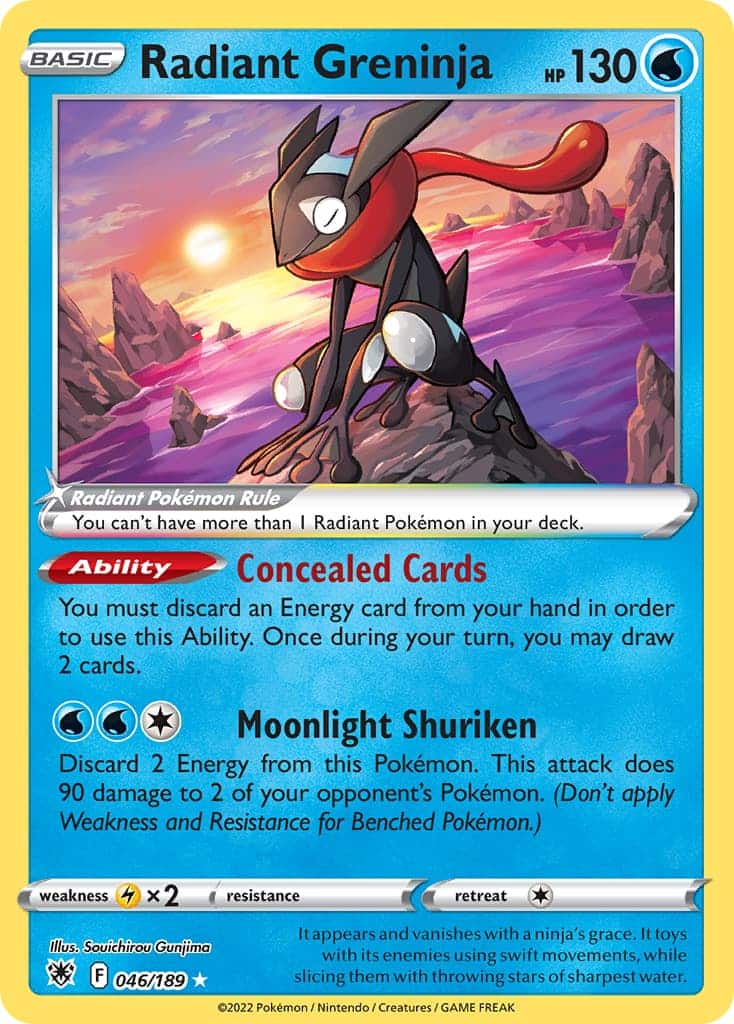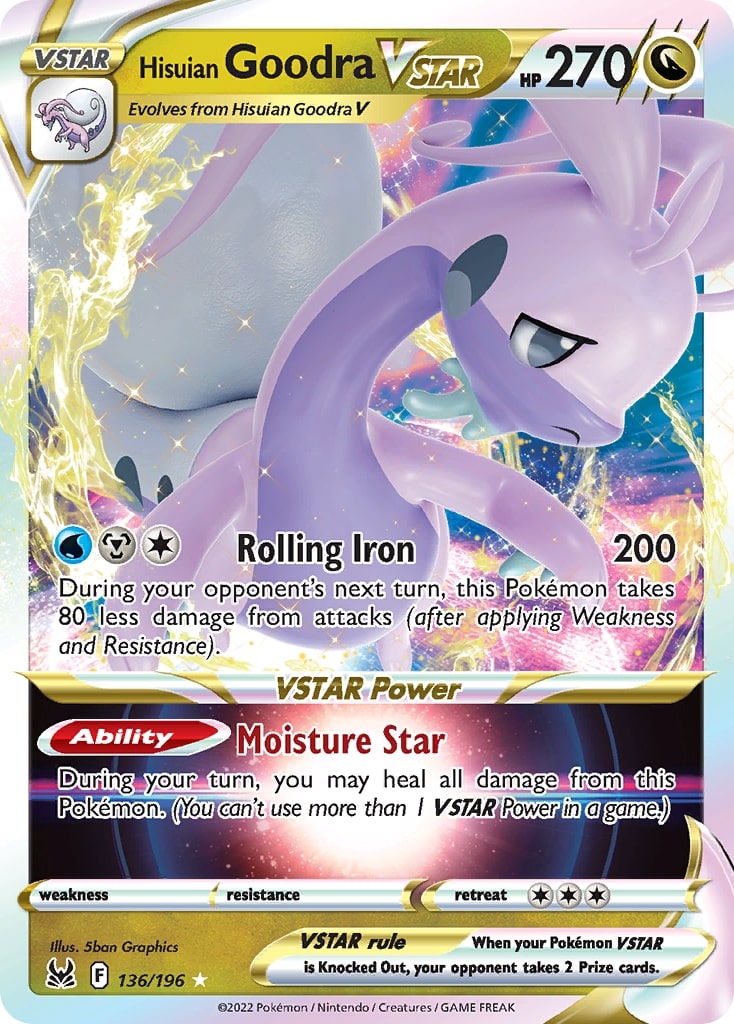I’m back! The European International Championships (EUIC for short) took place last weekend, and as always, it was a blast! As the first event after rotation and the addition of the new Scarlet & Violet set, it was definitely an event to watch. The results were also very interesting: many decks were similar to ones we had pre-rotation, which means that players who started to play earlier in the season were not lost. However, the way to build these decks, and their matchups with other decks in the metagame, all of this changed, which made the format look new enough. Moreover, several new decks proved to be very relevant, cementing the Scarlet & Violet set as an important, but not overbearing, presence in the format.
Personally, I didn’t do as well as I’d hoped. I finished the tournament with a 5-3-1 record, losing my win-and-in for day 2 in a close series. While it’s always disappointing to not get points at an event, I left London feeling more motivated than ever. International Championships are where players from all over the world get to make their ideas clash, and in a new format, that always leads to plenty of fascinating ideas. There are plenty of decks that I can’t wait to play more of, so today, I’d like to discuss some of the most notable decks that were played in London.
Arceus / Duraludon / Vulpix deck
Let’s start with the most obvious: the deck Alex Schemanske used to win the whole tournament. Few people expected Arceus VSTAR to do well, especially with any other partner than Giratina VSTAR. However, Alex and his team crafted a deck that was perfectly suited to the expected metagame. Lugia VSTAR can’t deal with Duraludon VMAX. Two copies of Drapion V are key against Mew VMAX. Alolan Vulpix VSTAR is immune to almost all attackers in Gardevoir. Against Lost Zone decks, the tankiness of the deck’s various attackers, the healing from Cheren’s Care, frequent Judge, and Lost City removing one-of attackers from the game permanently all help to give the deck a plan of attack.
| Pokémon – 17 |
|---|
| 4 Arceus V BRS 122 |
| 3 Arceus VSTAR BRS 123 |
| 2 Duraludon V CRZ 103 |
| 2 Duraludon VMAX CRZ 104 |
| 2 Drapion V LOR 118 |
| 1 Alolan Vulpix V SIT 33 |
| 1 Alolan Vulpix VSTAR SIT 34 |
| 1 Lumineon V BRS 40 |
| 1 Radiant Gardevoir LOR 69 |
| Trainer Cards – 3o |
|---|
| 4 Professor’s Research SVI 189 |
| 3 Colress’s Experiment LOR 155 |
| 3 Judge SVI 176 |
| 3 Boss’s Orders BRS 132 |
| 1 Cheren’s Care BRS 134 |
| 1 Raihan CRZ 140 |
| 4 Ultra Ball SVI 196 |
| 4 Nest Ball SVI 181 |
| 1 Switch SVI 194 |
| 1 Escape Rope BST 125 |
| 1 Choice Belt BRS 135 |
| 4 Lost City LOR 161 |
| Energy – 13 |
|---|
| 4 Double Turbo Energy BRS 151 |
| 4 Metal Energy 8 |
| 3 Fighting Energy 6 |
| 2 Water Energy 3 |
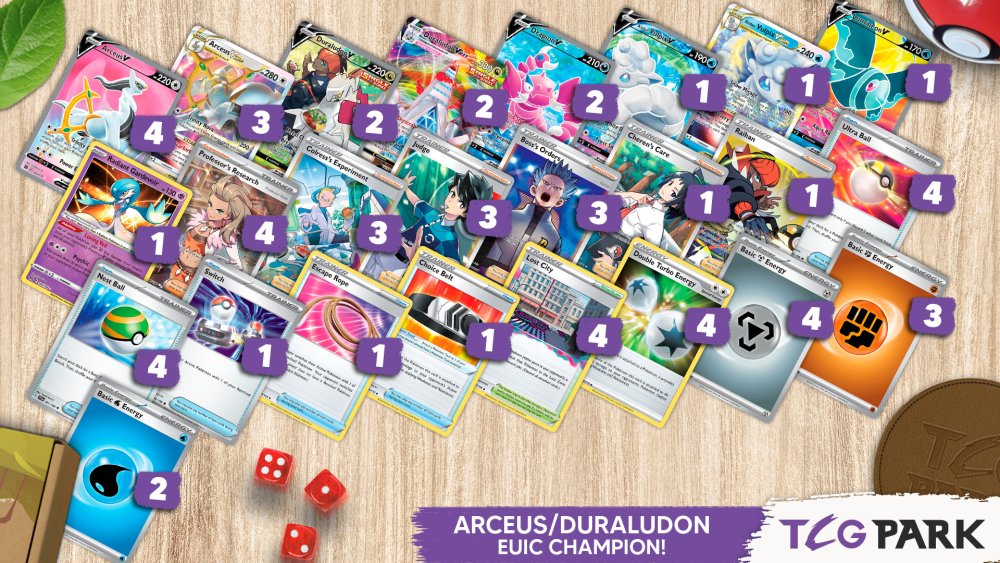
To be honest, though, I’m not a huge fan of this deck. While it has plenty of draw Supporters, the lack of a draw engine (like Bibarel) means that the deck can be vulnerable to Judge and Roxanne. That was fine for classic Arceus / Duraludon, which was very streamlined, but this deck has multiple attackers and may not always find what it needs in such conditions. Alex Schemanske himself wrote on Twitter that this deck likely won’t win an event again, as it relied on people being unprepared. For example, ever since the finals, every Gardevoir player has been considered which cards (in addition to Memory Skip Ralts) to fit in their deck to counter Alolan Vulpix VSTAR. Possible answers include Mimikyu ex and Gallade CRE, but there are also multipurpose Trainer cards that can work, like Path to the Peak, which shuts down Zacian V’s Ability and allows it to hit Alolan Vulpix VSTAR. Like any reactive deck, this Arceus concoction will need to reinvent itself to adapt to shifts in the metagame.
That being said, Arceus VSTAR winning an International Championship again proves that, while the card may have fallen from its place as the king of the format, it’s still a force to be reckoned with.
Lost Box deck
Lost Zone Toolbox was the most played deck in the tournament, but it did pretty badly overall, relatively speaking. Surprisingly, the most successful variant of Lost Box was Sableye / Radiant Charizard, which Pedro Eugenio Torres brought to a top 4 finish, rather than the Turbo Mirage Gate variant, which most players considered the most threatening.
I think these results can be explained by the hype that Lost Box received following its success, both in Asia (where rotation occurred earlier this year) and in online tournaments. Every player had to prepare a lot for various Lost Zone variants, and many decks included cards like Collapsed Stadium to prevent Sableye from taking easy Prizes everywhere. That said, I think those who say that Lost Box was overhyped and didn’t deserve all that respect are deluding themselves. Now that players will have to divert their attention away from Lost Box and towards other decks like Gardevoir, I fully expect Lost Box to rise in success. This deck is definitely a relevant part of the metagame.
I myself played the Turbo Mirage Gate variant at EUIC, featuring Kyogre. While I didn’t make day 2, my friend Ithiel Arki took the same decklist to a top 64 finish. Here’s what we played:
| Pokémon – 12 |
|---|
| 4 Comfey LOR 79 |
| 2 Sableye LOR 70 |
| 1 Raikou V BRS 48 |
| 1 Dragonite V PR-SW 154 |
| 1 Cramorant LOR 50 |
| 1 Radiant Greninja ASR 46 |
| 1 Manaphy BRS 41 |
| 1 Kyogre CEL 3 |
| Trainer Cards – 37 |
|---|
| 4 Colress’s Experiment LOR 155 |
| 2 Klara CRE 145 |
| 4 Switch Cart ASR 154 |
| 4 Escape Rope BST 125 |
| 4 Mirage Gate LOR 163 |
| 4 Battle VIP Pass FST 225 |
| 3 Energy Recycler BST 124 |
| 3 Nest Ball SVI 181 |
| 3 Lost Vacuum CRZ 135 |
| 1 Hisuian Heavy Ball ASR 146 |
| 1 Pokégear 3.0 SVI 186 |
| 2 Forest Seal Stone SIT 156 |
| 2 Beach Court SVI 167 |
| Energy – 11 |
|---|
| 5 Water Energy 3 |
| 3 Psychic Energy 5 |
| 3 Lightning Energy 4 |
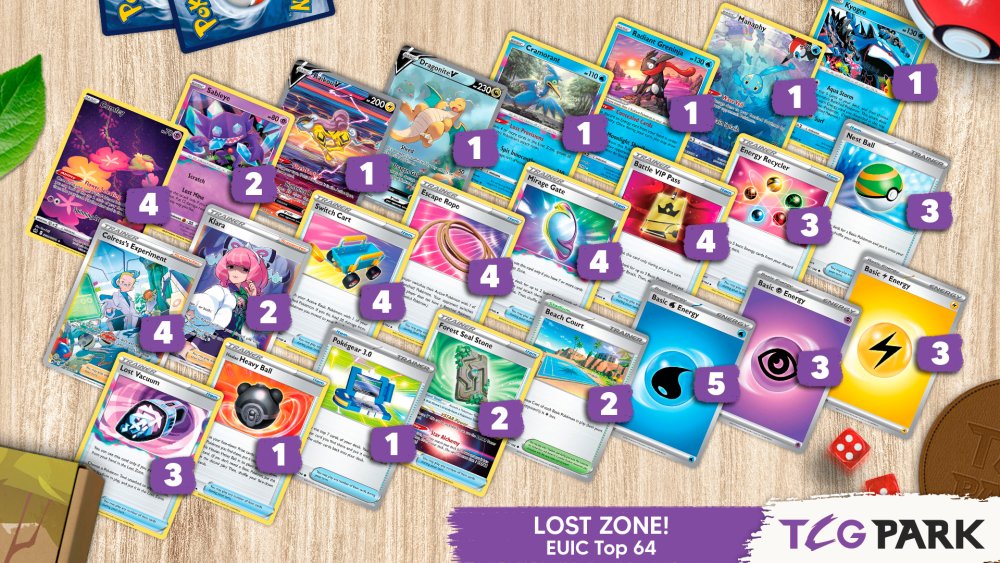
There’s not actually a lot of innovation in this list, and many players used very similar decklists. We considered various other cards, such as Tropius EVS to deal with Tyranitar V, but in the end, we chose to play as consistent a list as possible. This also led us to choices like the third Nest Ball and a Pokégear rather than cards like Hawlucha. We also included a third Energy Recycler, which seemed important so we could use Kyogre in the late game even if we had to Lost Zone one Energy Recycler earlier in the game. Before rotation, Kyogre lists typically played two Energy Recycler and two Ordinary Rod, so even though we have Klara for some recovery, I think a third Energy Recycler is absolutely worth playing.
Despite not making day 2, I’m very satisfied with this deck. It can be a puzzle to play, and I think I misplayed in my last round due to not being prepared enough, but it’s also very satisfying to use and, obviously, very strong. The multiple threats of Radiant Greninja, Sableye and Dragonite V are not easy for an opponent to deal with.
For now, the only card I would consider adding in the future is an Echoing Horn. Many decks will try to deny Lost Box Prizes, with cards like Collapsed Stadium. Echoing Horn can give Lost Box access to easier Prizes. This is especially relevant against the next deck…
Goodra VSTAR deck
This might surprise you, but I didn’t actually test Goodra VSTAR before EUIC. Despite being arguably the deck’s most famous proponent, I decided early on in my testing process that since Goodra lost to Giratina, it was a bad choice as Giratina was going to be the deck’s most played format.
Except it wasn’t. While this was true in Japan for quite some time, the popularity of Lost Box (which has a good Giratina matchup) meant that many players shied away from Giratina, and it was only the fifth most played deck at EUIC (behind Lost Box, Lugia, Mew and Gardevoir). Having a bad matchup against Giratina was not ideal, but it was not a death sentence for a deck. By the time I understood that, I felt it was too late to pick up the deck.
However, many players understood that Goodra was a strong choice in this metagame way before me, and Goodra ended up being the sixth most played deck in the tournament. It had a great day 2 conversion rate and ended up being the third most played deck in day 2.
There are many arguments in favor of the deck. First, Goodra VSTAR tends to have a solid matchup against the various incarnations of Lost Box. Recent Goodra lists tend to play Melony, so they’re not as reliant on Mirage Gate. This means that, while they use the Lost Zone engine, they can work even if their Comfeys get KO’d quickly. Because of that, they don’t have to play down too many one-Prize Pokémon, which is important since, without Scoop Up Net, there is no way to retrieve a Comfey to save it from a KO.
Second, Lugia VSTAR used to be Goodra’s worst matchup but, after rotation, it lost its most threatening attackers, Yveltal and Raikou. Now, Goodra VSTAR can easily beat Lugia VSTAR in Prize trades. Lugia decks struggle with Knocking Out Goodra VSTAR unless they play something like Duraludon VMAX, which is still rare (but might become more common in the future in order to deal with Arceus / Duraludon). This turns Goodra’s worst matchup into a fairly good one.
Here’s the decklist I would probably run if I was playing Goodra right now.
| Pokémon – 13 |
|---|
| 4 Comfey LOR 79 |
| 3 Hisuian Goodra V LOR 135 |
| 3 Hisuian Goodra VSTAR LOR 136 |
| 1 Radiant Greninja ASR 46 |
| 1 Cramorant LOR 50 |
| 1 Drapion V LOR 118 |
| Trainer Cards – 35 |
|---|
| 4 Colress’s Experiment LOR 155 |
| 3 Boss’s Orders BRS 132 |
| 2 Melony CRE 146 |
| 1 Roxanne ASR 150 |
| 4 Battle VIP Pass FST 225 |
| 4 Switch SVI 194 |
| 4 Escape Rope BST 125 |
| 3 Mirage Gate LOR 163 |
| 3 Nest Ball SVI 181 |
| 2 Pokégear 3.0 SVI 186 |
| 2 Ultra Ball SVI 196 |
| 1 Choice Belt BRS 135 |
| 1 Beach Court SVI 167 |
| 1 Temple of Sinnoh ASR 155 |
| Energy – 12 |
|---|
| 6 Water Energy 3 |
| 5 Metal Energy 8 |
| 1 V Guard Energy SIT 169 |

There are arguments against Goodra VSTAR, though. I think the deck will be a part of the metagame for a while, but I don’t think it’s that well positioned right now. I expect Giratina VSTAR to rise in popularity in the weeks to come; Gardevoir ex is also likely to be played more, and it tends to be a bad matchup for Goodra VSTAR since Zacian V can take three Prizes off it with Sky Seal Stone.
Nevertheless, I’m glad that the deck that earned me 290 CP this season is still around!
Gardevoir deck
Finally, perhaps the most exciting news from EUIC is Gardevoir’s success. I’m not surprised that Tord Reklev chose that deck, as he tends to love this kind of Pokémon-based draw engine (as do I). However, the fact that he got to second place means that the deck, in the hands of a good player, has a ton of potential. In addition to this, Nico Alabas used almost the same decklist (with a one card difference) to win the 300-player League Cup happening on days 2 and 3 of EUIC, which confirms the deck’s power.
| Pokémon – 18 |
|---|
| 3 Ralts ASR 60 |
| 1 Ralts SIT 67 |
| 4 Kirlia SIT 68 |
| 2 Gardevoir ex SVI 86 |
| 1 Gardevoir CRE 61 |
| 2 Zacian V CEL 16 |
| 1 Cresselia LOR 74 |
| 1 Mew CEL 11 |
| 1 Radiant Greninja ASR 46 |
| 1 Manaphy BRS 41 |
| 1 Lumineon V BRS 40 |
| Trainer Cards – 30 |
|---|
| 4 Professor’s Research SVI 189 |
| 1 Judge SVI 176 |
| 1 Roxanne ASR 150 |
| 1 Worker SIT 167 |
| 1 Miriam SVI 179 |
| 1 Boss’s Orders BRS 132 |
| 1 Penny SVI 183 |
| 4 Battle VIP Pass FST 225 |
| 4 Level Ball BST 129 |
| 3 Fog Crystal CRE 140 |
| 3 Ultra Ball SVI 196 |
| 2 Rare Candy SVI 191 |
| 1 Pal Pad SVI 182 |
| 1 Sky Seal Stone CRZ 143 |
| 1 Temple of Sinnoh ASR 155 |
| 1 Collapsed Stadium BRS 137 |
| Energy -12 |
|---|
| 12 Psychic Energy 5 |
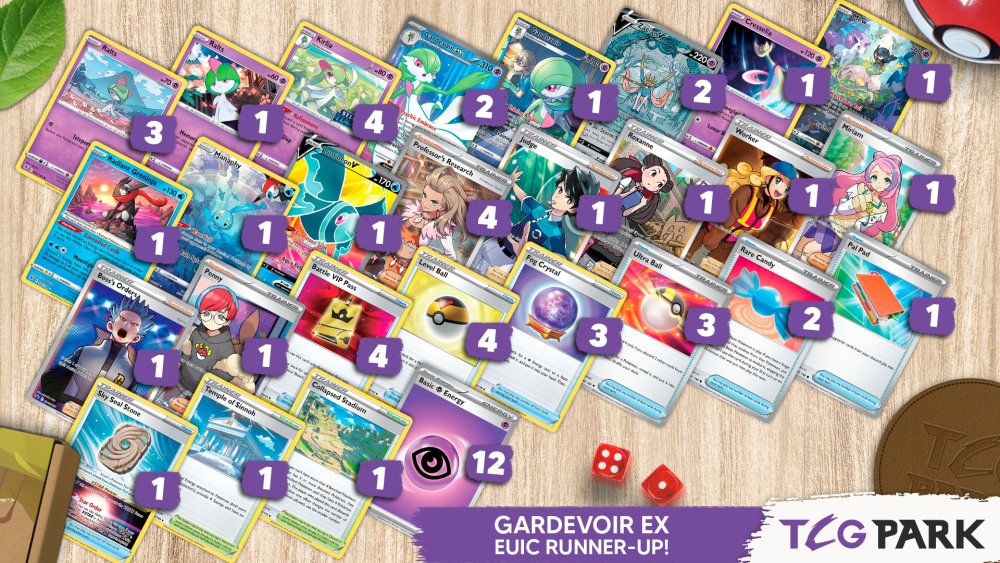
Here’s Tord’s decklist, and it differs quite a bit from what most people were playing. Notably, Tord, as usual, chose consistency over any other consideration: four Professor’s Research and Lumineon V is basically unheard of in Gardevoir, but this might be what the deck needs to ensure it can set up. Once it’s set up, Kirlia’s draw power will make the deck work for the rest of the game.
Also notable is the presence of two Zacian V and only one Gardevoir CRE. Zacian V is the deck’s most threatening attacker, as it can KO anything with enough Energy in the discard. With Sky Seal Stone, it can also take an extra Prize, which can offset a slow start. Being a Basic, it’s also easier to use; you don’t lose part of your draw engine when it’s KO’d. Also, it can take early Prizes against Lost Box, then be removed from play with Penny or Collapsed Stadium, so the opponent can’t take two Prizes off of it.
The deck plays Miriam rather than Klara and a twelfth Psychic Energy over a fourth Fog Crystal. Miriam can recover more Pokémon, which is important in an Evolution deck with four Professor’s Research. However, it can’t get Energy back, unlike Klara, so having more Psychic Energy is important in order to be able to keep attaching one every turn, and also draw more cards with Radiant Greninja.
Gardevoir can beat basically anything in the format, but the main thing that holds it back is the Lost Box matchup. It’s not unwinnable, and there are several ways to fight back, like Cresselia, hand disruption, and Penny removing easy targets, but it’s overall not the easiest matchup.
In any case, it’s exciting to have a stage 2 deck on the forefront of the metagame once again. Tord showed the blueprint for the deck, but there are many other cards that can fit in the list, and I think that as people figure out what to change to beat various matchups, Gardevoir will keep seeing success. The future is bright for the designers’ favorite stage 2 Pokémon and I can’t wait to play it more!
Conclusion
This is it for today’s article. Of course, there are plenty of other powerful decks that appeared at EUIC: Rapid Strike Urshifu VMAX / inteleon VMAX made top 16, Sander unveiled a new take on Control featuring Mimikyu V, Miraidon ex managed to get top 8 by using Cram-o-matic… I think every player right now, no matter their playstyle, can find a deck they like. This is very exciting for local events! I hope you too have found a deck you enjoy playing. Good luck at your next League Challenge!
Stéphane

